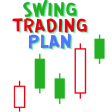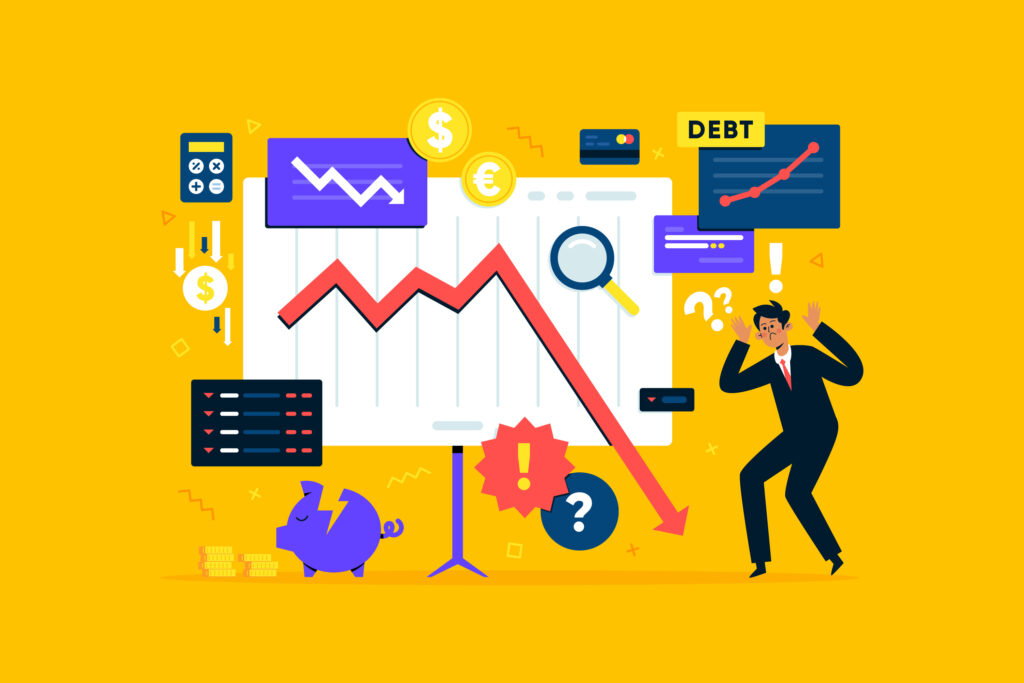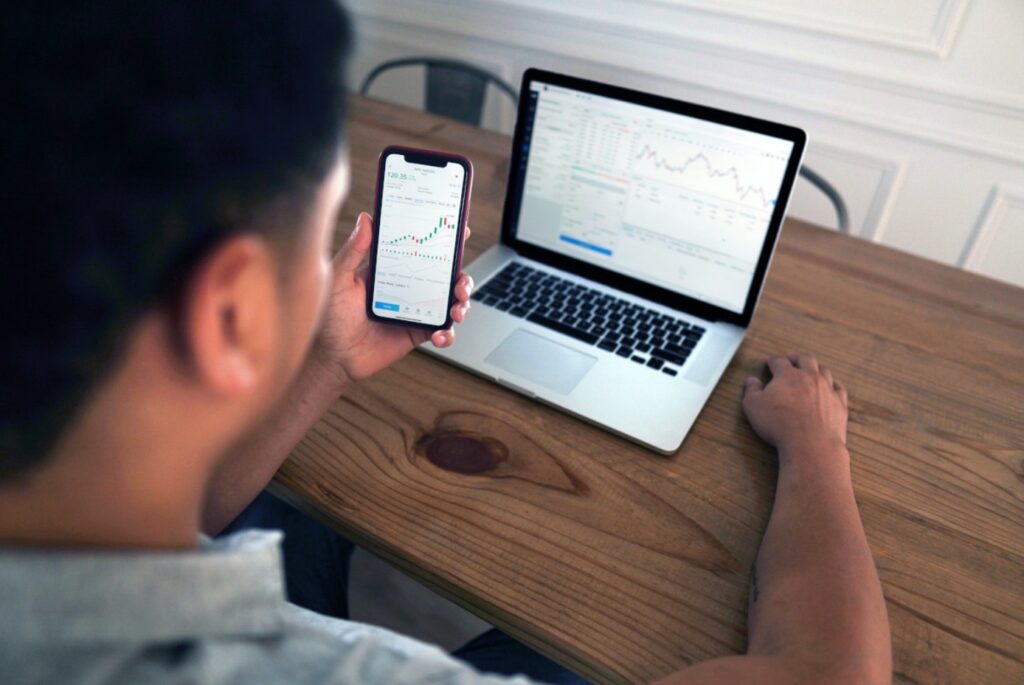Table of Contents
Swing trading and Day trading or you can say “Swing Trading vs Day Trading” have become buzzwords in the financial world, each offering unique approaches to capitalize on market movements. In this comprehensive guide, we will delve into the pros and cons of these two trading strategies, helping you navigate the complexities of the financial market.
Introduction
Definition of Swing Trading and Day Trading
Swing trading involves capitalizing on medium-term trends, typically holding positions for a few days to weeks. On the other hand, day trading is characterized by making multiple trades within a single day, capitalizing on short-term market fluctuations.
Brief Overview of Popularity
Both swing trading and day trading have gained immense popularity due to their potential for quick profits and active involvement in the financial markets. Traders often find themselves at a crossroads, deciding which strategy aligns better with their goals and risk tolerance.
Understanding Swing Trading
Explanation of Swing Trading
Swing trading focuses on capturing “swings” or price movements within a broader trend. Traders analyze charts, identify patterns, and make informed decisions to capitalize on anticipated market movements.

Duration and Frequency of Trades
Unlike day trading, swing trading involves holding positions for a more extended period, usually ranging from a few days to several weeks. This allows traders to ride out short-term market fluctuations.
Identifying Trends and Patterns
Successful swing traders are adept at identifying trends and patterns in the market. Technical analysis plays a crucial role, like using indicators helping traders make informed decisions based on historical price movements.
Pros of Swing Trading
Less Time Commitment
Imagine yourself enjoying a weekend getaway while your swing trades work silently in the background. Unlike day trading, which requires near-constant monitoring, swing trading allows you to hold positions for days or even weeks. This flexibility lets you manage your trades around your existing commitments, whether it’s a full-time job, family time, or simply exploring a new hobby.
Potentially Larger Gains
Think of it like riding a wave. Day traders hop on and off tiny ripples, while swing traders aim for the bigger swells. By holding positions for longer periods, swing traders can capture larger price swings that offer greater profit potential. Remember, this doesn’t guarantee success, but it increases your chances of hitting home runs compared to day trading’s focus on smaller, more frequent gains.
Lower Trading Costs
Every trade comes with a fee, like a toll booth on the investment highway. Day traders, with their constant buying and selling, rack up more of these tolls, chipping away at their profits. Swing traders, with fewer trips, pay fewer tolls, keeping more of their hard-earned money in their pockets.
More Manageable Risk
Picture a tightrope walker with a safety net. Swing traders, by closing positions before major market shifts, essentially have a built-in safety net. They can avoid the overnight risk that day traders face, limiting potential losses during unpredictable market hours.
Bonus Pros
Discipline Builder: Swing trading requires patience and sticking to your trading plan. This enforced discipline can translate into other areas of your life, making you a more focused and goal-oriented individual.
Psychological Advantage: Avoiding the intense pressure and stress of day trading allows swing traders to maintain a calmer and more balanced approach to the market, which can lead to better decision-making in the long run.
While swing trading offers some tempting advantages, it’s important to be aware of the potential downsides before setting sail. Here’s a closer look at the cons of swing trading:
Cons Of Swing Trading
Overnight Risk
Imagine leaving your surfboard propped up on the beach at night, hoping to catch the perfect wave tomorrow. In swing trading, your “surfboard” is your open position. Just like the tide can unexpectedly pull your board out to sea, the market can move against you overnight. Holding positions over multiple days exposes you to this unpredictability, potentially turning a promising swing into a nasty wipeout.
Missing Out on Trends
Sometimes, markets experience sustained upward trends. If you close your position too early as a swing trader, you might miss out on these long-term gains. It’s like catching a small wave right at the crest, only to watch someone else ride the whole swell to shore. Sure, you made some profit, but you could have done a lot better with patience.
The Patience Paradox
Some folks find the wait-and-see nature of swing trading frustrating. Watching the market fluctuate without immediate action can feel like staring at drying paint. They might impulsively close positions too early, potentially missing out on profitable swings just to “do something.” It’s a delicate balance between patience and boredom, and not everyone enjoys the slow dance of swing trading.
Discipline is Your Anchor
Sticking to your trading plan is crucial in any strategy, but especially in swing trading where emotions can run high. Imagine watching your open position plummet in value overnight. Fear can make you close the trade at a significant loss, sabotaging your long-term strategy. Conversely, greed might tempt you to hold on too long, hoping for a miraculous comeback that never arrives. Mastering discipline is like anchoring your boat during a storm, ensuring you don’t get swept away by emotions.
Exploring Day Trading
Definition and Characteristics
Day trading involves making multiple trades within a single day, taking advantage of intraday market movements. It requires quick decision-making and active participation throughout the trading session.

Short-Term Nature and Rapid Decision-Making
Day traders thrive on short-term market movements. Quick decision-making, often based on technical analysis and real-time information, is crucial for success in day trading.
Pros of Day Trading
Quick Profit Potential
Day trading offers the potential for quick profits, as traders capitalize on short-term price fluctuations. Successful day traders can generate income daily.
Active Involvement and Excitement
For those who enjoy the thrill of the financial markets, day trading provides constant excitement and active involvement in market movements.
Ability to Capitalize on Intraday Market Movements
Day traders focus on exploiting intraday market trends, taking advantage of price movements within the trading session.
While both swing trading and day trading offer different advantages, day trading comes with some significant drawbacks compared to swing trading:
Cons of Day Trading
High Stress and Pressure
Unlike swing traders who hold overnight positions, day traders constantly monitor the market and make frequent decisions, leading to heightened stress and anxiety.
The fast-paced environment and pressure to capitalize on every short-term movement can be mentally draining, creating emotional fatigue and potentially clouding judgment.
This mental strain can lead to impulsive decisions and trading mistakes, further increasing the risk of losses.
Risk of Errors
Day trading demands quick reactions and split-second decisions, increasing the chance of human error like fat-fingering orders or misinterpreting market signals.
The pressure to act fast can also lead to overlooking crucial information or ignoring stop-loss orders, potentially exacerbating losses.
Swing trading’s longer holding periods allow for more deliberation and analysis, reducing the risk of impulsive mistakes and fostering a more measured approach.
Higher Trading Costs
Day trading typically involves a much higher number of trades than swing trading, which translates to significantly higher commissions and fees.
These accumulated costs can eat into profits and erode gains, especially if you’re experiencing frequent losses due to errors or impulsive decisions.
Swing trading’s lower number of trades minimizes trading costs, improving the overall profitability potential.
Requires Significant Time Commitment
Day trading demands dedicated attention throughout the trading day, requiring constant monitoring of charts, news, and market movements.
This can be challenging for individuals with busy schedules or other commitments, leading to missed opportunities or inadequate analysis due to time constraints.
Swing trading offers more flexibility, as positions are held for longer periods and don’t require continuous monitoring, making it better suited for those with limited time availability.
Increased Overnight Risk
While not a direct disadvantage compared to swing trading, day trading eliminates the overnight risk associated with holding positions open.
However, this benefit can be a double-edged sword. Missing out on potentially favorable overnight market movements can limit profit potential.
Day traders may miss out on long-term trends or miss opportunities to capture larger price swings that occur over longer periods.
Comparative Analysis
Risk and Reward Comparison
Comparing the risk and reward of swing trading and day trading helps traders make informed decisions based on their risk tolerance and financial goals.

Suitable Market Conditions for Each Approach
Understanding the market conditions suitable for each approach is key to successful trading. Some markets may favor swing trading, while others may be more conducive to day trading.
Factors to consider when deciding between swing and day trading
Choosing between Swing trading vs Day trading is a crucial decision for aspiring active traders. Both offer potential profits, but their demands and risks differ drastically. To make an informed choice, consider these crucial factors:
Time Commitment
Swing Trading: More relaxed, requiring less screen time. Positions held for days or weeks, allowing time for work, hobbies, and other commitments. Ideal for busy individuals who want to trade actively but have limited daily availability.
Day Trading: Intense and demanding, requiring constant monitoring and quick decision-making throughout the trading day. Can be a full-time job, potentially impacting other aspects of life. Only suitable for those who can dedicate the required hours and handle the pressure.
Risk Tolerance
Swing Trading: Lower risk due to holding positions overnight less frequently. Exposure to overnight market gaps is still present, but not as immediate as in day trading.
Day Trading: Higher risk due to more frequent trading and exposure to intraday volatility. Mistakes can quickly multiply due to the fast-paced nature. Requires a stronger stomach for potential losses and the ability to manage emotions under pressure.
Capital Requirement
Swing Trading: Typically requires more capital as positions are held for longer periods. Larger swings potentially generate bigger profits, but initial investment might be higher.
Day Trading: Can start with smaller capital due to smaller position sizes and frequent exits. However, transaction fees can accumulate quickly with numerous trades, potentially negating small profits.
Personality and Skills
Swing Trading: Requires patience and discipline, waiting for the right opportunities and sticking to the trading plan. Suitable for individuals comfortable with longer-term thinking and less frequent action.
Day Trading: Thrives on mental agility, quick decision-making, and strong technical analysis skills. Ideal for those who enjoy fast-paced action, adapting to changing market conditions, and analyzing charts meticulously.
Lifestyle and Goals
Swing Trading: More flexible, allowing time for other activities and commitments. Easier to integrate with a non-trading lifestyle. Suitable for those seeking long-term wealth accumulation through active trading.
Day Trading: Demands a dedicated trading setup and schedule, potentially impacting personal life and relationships. Can be a full-time career or a highly focused side hustle. Ideal for those seeking short-term gains and the excitement of constant market interactions.
Case Studies
Adding real-life examples can breathe life into your blog post and help readers understand the practical implications of swing and day trading. Here are some case study ideas:
- The Patient Investor
Profile: Johns Benny, a retired teacher with a long-term investment horizon. He seeks moderate but reliable income and is comfortable with holding positions for weeks or months.
Swing Trade Example: Johns Benny identifies a tech company undergoing a turnaround. He buys shares at $20 and holds them for three months, selling for $28 during a positive earnings report. This swing trade generates a 40% profit and contributes to his income goals.
Day Trade Contrast: Johns Benny tries day trading with another stock but gets spooked by a sudden market dip and sells at a loss. He realizes his risk tolerance and timeframe are better suited for longer-term swings.
- The Active Trader
Profile: Perry, a young professional with a high income and risk tolerance. She enjoys the thrill of fast-paced trading and aims for immediate profits.
Day Trade Example: Perry analyzes technical indicators and identifies a short-term opportunity in a volatile stock. She enters a long position at $15 and exits within an hour at $17, securing a quick 13% gain.
Swing Trade Contrast: Perry attempts a swing trade by holding the same stock overnight, but a negative news report causes a significant drop. She exits with a loss, highlighting the potential risk of overnight exposure in day trading strategies.
- The Unexpected Turn
Profile: Travis, a cautious investor who initially prefers swing trading due to its lower risk and overnight flexibility.
Swing Trade Example: Travis buys shares in a stable consumer goods company and expects to hold them for several weeks. However, an unexpected industry disruption causes the stock price to skyrocket within a few days.
Day Trade Contrast: By holding onto the position instead of day trading to profit from the surge, Travis experiences the potential benefit of swing trading – capturing larger unexpected gains through longer holding periods.
Risk Management in Both Approaches
Risk management is the lifeblood of any trading strategy, but its nuances differ between the longer horizons of swing trading and the rapid-fire world of day trading. Let’s explore how to handle the risks in each:

Swing Trading
Overnight Risk: Your biggest foe. Markets can gap overnight, potentially leaving you underwater when your position reopens.
Mitigation Strategies: No 1
Stop-loss orders: Automate exits at predetermined levels to limit potential losses.
Position sizing: Limit exposure per trade to minimize overall account risk.
Exit plan: Define clear profit and loss targets to avoid emotional decisions.
News awareness: Stay informed about potential catalysts for overnight gaps.
Volatility: Unexpected swings can eat into profits.
Mitigation Strategies: No 2
Technical analysis: Identify potential support and resistance levels to inform entry and exit points.
Fundamental analysis: Understand the underlying factors driving the asset’s value to assess its resilience against shocks.
Diversification: Spread your capital across different assets to reduce concentration risk.
Psychological Challenges: Patience and discipline are key.
Mitigation Strategies: No 3
Trading plan: Stick to a documented strategy to avoid emotional trading.
Journaling: Track your trades and emotions to learn from mistakes.
Practice mindfulness: Manage stress and maintain a clear head to make rational decisions.
Day Trading
Frequency of Mistakes: The more trades you make, the higher the chance of errors.
Mitigation Strategies: No 1
Focus on quality over quantity: Prioritize high-probability trades based on strong technical signals.
Take breaks: Avoid exhaustion and impulsive decisions, especially towards the end of the trading day.
Back testing & simulation: Test your strategies before risking real capital.
Information Overload: Rapid market changes require constant attention.
Mitigation Strategies: No 2
Prioritize key indicators: Don’t get overwhelmed by too much data. Focus on your preferred technical setup.
Simplify your charts: Remove unnecessary indicators to avoid clutter and confusion.
Use automation tools: Utilize alerts and filters to focus on relevant market movements.
Commissions & Fees: Frequent trades add up in costs.
Mitigation Strategies: No 3
Negotiate broker fees: Look for brokers with competitive trading commissions.
Choose efficient trade sizes: Avoid excessive small trades that incur high proportional fees.
Focus on larger profit opportunities: Minimize the number of trades needed to reach your goals.
Psychological Aspects of Trading
Addressing Emotional Challenges
Both swing and day trading involve psychological challenges. Develop a disciplined mindset to navigate emotional highs and lows in the financial markets.
Discipline for Successful Trading
Maintaining discipline is essential for making rational decisions and avoiding impulsive actions driven by emotions.
Educational Resources
Choosing between Swing Trading vs Day Trading is like picking your lane on a racetrack: each demands different skills and resources to navigate successfully. To help you fuel your learning journey, let’s explore some educational resources for each style:

Swing Trading:
Books:
- “Trading in the Zone” by Mark Douglas: This psychological classic emphasizes mental discipline and emotional control, crucial for swing trading’s longer holding periods.
- “Technical Analysis Explained” by Martin Pring: This comprehensive guide delves into technical indicators and chart patterns, essential tools for swing traders to identify entry and exit points.
Courses:
- Warrior Trading: This platform offers a variety of swing trading courses, from beginner-friendly introductions to advanced strategy development.
- Investopedia Academy: Their “Swing Trading Strategies” course provides a solid foundation in technical analysis and risk management for swing traders.
Websites:
- Stockcharts.com: This website offers a wealth of technical analysis tools and educational resources, perfect for swing traders to research potential trades.
- Barchart.com: This free platform provides real-time quotes, news, and technical analysis tools, ideal for staying informed about potential swing trading opportunities.
Day Trading:
Books:
- “Trading in the Zone” by Mark Douglas: Again, this psychological gem holds value for day traders, who face intense pressure and rapid decision-making.
- “Day Trading 101” by Brett Steenbarger: This helpful manual explains risk management, technical analysis techniques, and day trading strategies for newbies.
Courses:
- Trade Ideas: This platform offers advanced software and educational resources for day traders, focusing on identifying high-probability trading opportunities.
- TraderLion: This website provides a plethora of day trading courses, webinars, and live trading sessions for aspiring day traders of all levels.
Websites:
- Finviz.com: This website offers powerful stock screeners and technical analysis tools, allowing day traders to identify potential setups quickly.
- TradingView.com: This popular platform provides charting tools, social networking for traders, and real-time market data, perfect for day traders to stay on top of the market.
Swing Trading vs Day Trading – Which is more profitable?
The profitability of swing trading vs day trading depends on various factors, and there is no one-size-fits-all answer. Both trading styles have their own advantages and disadvantages, and success often depends on the trader’s skills, experience, risk tolerance, and market conditions. Here are some key points to take note for each approach:
Day Trading:
- Short-Term Focus: Day traders open and close positions within the same trading day, aiming to profit from short-term price movements.
- High Activity: Day trading requires constant attention to the market, as traders make multiple trades in a single day.
- Leverage: Day traders often use leverage to amplify their potential returns, but this also increases the risk.
Swing Trading:
- Medium-Term Perspective: Swing traders hold positions for a few days to weeks, aiming to capture price swings within a trend.
- Less Time-Consuming: Swing trading allows for a more relaxed trading approach compared to the intense focus required for day trading.
- Reduced Transaction Costs: Since swing traders make fewer trades, they may incur lower transaction costs compared to day traders.
Factors to Consider:
- Market Conditions: Certain markets or assets may be more suitable for one trading style over the other. For example, highly volatile markets may favor day trading.
- Trader’s Personality: Some traders thrive in the fast-paced environment of day trading, while others may find it stressful. Swing trading provides a more relaxed environment.
- Risk Tolerance: Day trading involves quick decision-making and higher volatility, leading to increased risk. Swing trading allows for more measured and less frenetic decision-making.
- Skill and Experience: Both styles require specific skills, and success often comes with experience. Traders need to develop strategies and risk management techniques that align with their chosen style.
Conclusion
In conclusion, both swing trading and day trading offer unique opportunities and challenges. The choice between them depends on individual preferences, risk tolerance, and market conditions. By understanding the pros and cons of each approach, traders can make informed decisions that align with their financial goals.
FAQs
- Which trading style is less stressful, swing trading, or day trading?
Answering that swing trading is generally considered less stressful due to its longer holding periods. - Can day trading be profitable in volatile markets?
Affirming that day trading can be profitable in volatile markets but requires careful risk management and quick decision-making. - What role does technical analysis play in swing trading?
Emphasizing that technical analysis is crucial in swing trading, aiding in trend identification and informed decision-making. - Is day trading suitable for beginners in the stock market?
Suggesting that day trading can be challenging for beginners due to its rapid pace, recommending a gradual introduction with swing trading. - How important is emotional discipline in trading?
Stating that emotional discipline is paramount in trading, preventing impulsive decisions and ensuring a rational approach to market fluctuations.







